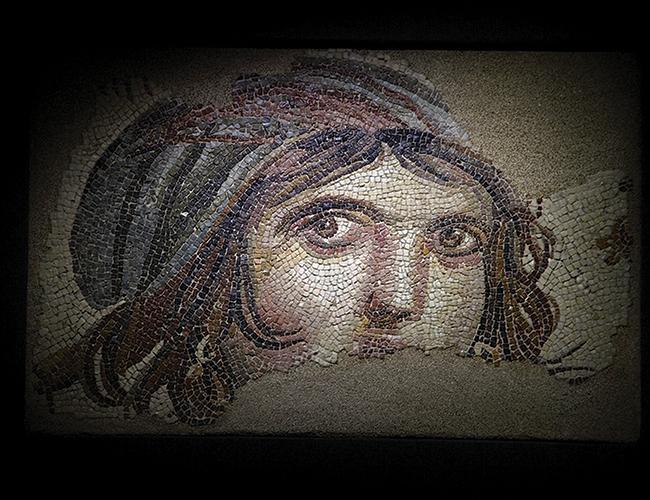Turkey’s unique mosaics presented in New York
Hatice Utkan Özden

Turkey is eyeing new tourist destinations with the “Mosaic Road,” a project that aims to boost Turkey’s cultural destinations. The project was presented in the Global Hope Coalition, an international event held in New York on Sept. 18.
The Mosaic Road is a culture and tourism project that aims to raise awareness to the importance of mosaics found in the southern province of Hatay, the Central Anatolian province of Kahramanmaraş, and the southeastern provinces of Şanlıurfa and Gaziantep.
As part of the project, Turkey ONE Association’s Executive Board Chair Demet Sabancı Çetindoğan and the chair of the advisory board, Professor İlber Ortaylı, participated as speakers at the Global Hope Coalition.
At a press conference held yesterday, Çetindoğan said the idea was to contribute to world peace in the areas of culture and tourism with the “Mosaic Road” project. The event organized by Global Hope Coalition, a significant non-governmental organization with a wide range of activities for world peace, was held in New York on Sept. 18, added Çetindoğan.
“As Turkey One Association, we have participated with our Mosaic Road project in the Global Hope Coalition Summit hosted by UNESCO in New York as one of the subsidiary events of the United Nations,” said Çetindoğan, adding, “We are privileged to have had the opportunity to present our essential project to the Global Hope Coalition Summit, one of the subsidiary events of the 72nd General Assembly of the United Nations.”
“Within the framework of Mosaic Road Project, Turkey One Association carries out its promotional work on international platforms regarding the unique mosaics that have been unearthed in the last century in the cities of Hatay, Kahramanmaraş, Şanlıurfa and Gaziantep, which embody the traces of countless civilizations for thousands of years, in order to make them receive well-deserved worldwide attention,” Çetindoğan said, adding that it was a project to save the forgotten cultural heritage of Turkey.
Before the U.S., the project was presented at the Peggy Guggenheim Collection Modern Art Museum in Venice.
Importance of mosaics
Speaking at the press conference, Ortaylı mentioned the importance of the mosaics in Turkey’s cultural heritage. “We know that Turkey is not the only country that has valuable mosaics. However, it is known that mosaics in Turkey are very rich and important worldwide.”
“There are other mosaic museums such as in Tunisia and Napoli but Turkey is important because in the past Turkey was home to a very big empire, the Roman Empire, and it was an important chapter in Turkey’s history. In terms of mosaics, the Roman Empire’s heritage still exists and that’s what makes Turkey very important and essential in the mosaic culture,” Ortaylı added.
Ortaylı spoke about the traces of countless civilizations, cultures and belief systems dating back to 4,000 B.C. These precious artifacts shed light on history and offer great insights into the era, as well as the country and the entire world. “However, we also know the mosaics were never the first choice of cultural heritage for Turkey because mosaics are really coming from a different cultural background. In Turkey, we usually see Ottoman tiles instead of mosaics,” he said.
The Turkey ONE Association opens a new dimension into the tourism of Turkey while supporting the presentation of the mosaics in the world cultural heritage scene.
New plans for contemporary art and Turkey’s heritage
The association also eyes new projects in contemporary art and cultural heritage. Also speaking at the press conference, Sevda Elgiz, the owner of the Elgiz Museum in Istanbul, said there will be new projects on contemporary art abroad with world-renowned curators. She also said this was not the first project of the association, reminding that it also conducted the Göbeklitepe excavation site project.
















